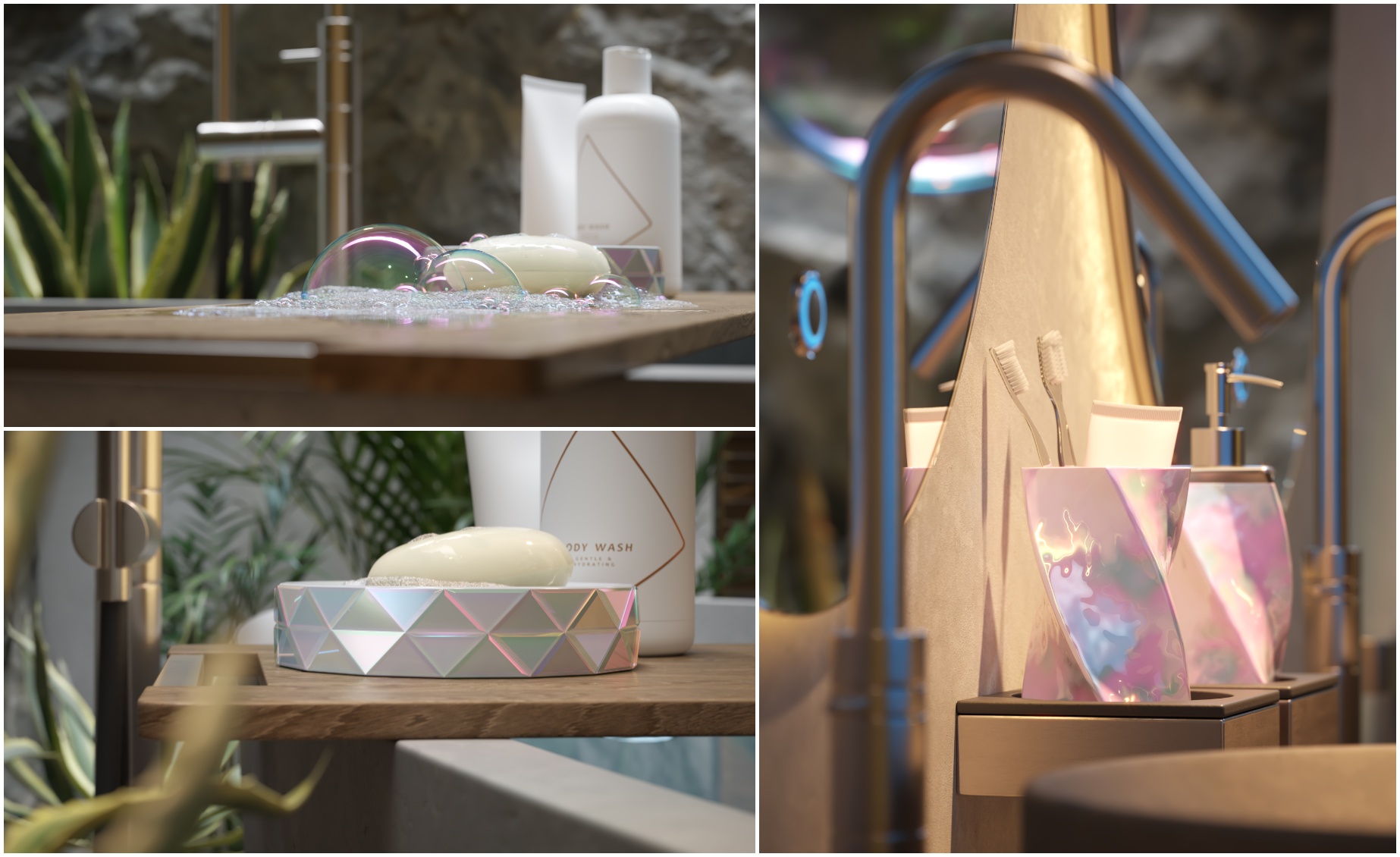VRayMtl’s Thin Film layer is perfect for recreating iridescent surfaces such as soap bubbles, oil spills, lens/glass coating, reflective car paint layering, and many more. The layer produces the effect of a thin film interference on the material’s surface, making it iridescent. VRayMtl includes a ready-made preset with a soap bubble material that significantly speeds up the building-scene time and saves you time for tweaking the Thin Film layer. For more complex surfaces such as an iridescent pearl-like surface, the Thin Film layer provides different approaches. In this tutorial, you’ll learn how to use the Thin Film parameters to create soap bubbles and bathroom accessories' pearl-like surfaces. The bathroom scene used here contains a simple interior (room) setting. The closeup shots are taken with a V-Ray Physical Camera (set to Physical Exposure) that uses real-world camera settings for further realism. The assets are taken from Chaos Cosmos library. Note that the Start scenes have the DoF parameter disabled for the VRayPhysicalCameras. The final results are rendered with DoF enabled and all assets visible.
|
|
|









